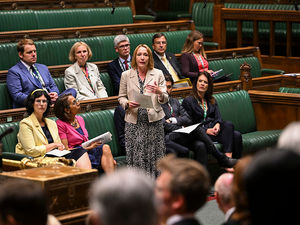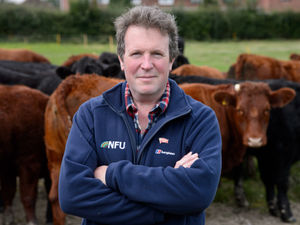Shropshire Farming Talk: New rights could make barn conversions more straightforward
The UK is facing a national shortage of good quality and affordable homes, so a raft of new measures have been suggested to stop unnecessary planning red tape slowing down the delivery of new properties.

One of the ways the Government is proposing to make the planning system more efficient and effective to overcome the shortfall in housing supply is by amending permitted development (PD) rights.
Some of these proposed changes apply to agricultural permitted development and, if made law, new legislation will soon allow farmers to diversify the use of buildings and deliver new housing on their land without the need for a long and arduous planning process.
So what do farmers need to know about the proposed new rules which were consulted on in the Autumn?
More homes, smaller homes: The first planned changes are to the size and number of Class Q homes (agricultural buildings converted into dwellings) which can be delivered by a farmer. This will allow more homes to be delivered, and expand the type and location of buildings that can benefit from the right as well as extending the scope of works that can be undertaken.
The Government’s proposals are that regulations be simplified to a single maximum floorspace of either 100 or 150sqm per home, while the maximum number of homes per agricultural unit increases from 5 to 10 and an overall maximum floorspace changing use of 1000sqm.
This encourages farmers to deliver a greater number of smaller homes on their land, by re-using existing buildings and thereby reducing the pressure to build homes on greenfield sites.
It's worth noting that whatever building you would like to convert into a dwelling must be suitable for conversion. Full demolition and rebuild is not allowed. Permitted works for a barn conversion include things like the installation or replacement of windows and doors or adding water, drainage, gas and electricity supplies.
Rear extension changes: The proposed PD rights changes suggest that rear extensions to Class Q conversions be allowed. Previously, any increase in the size of the original agricultural building was not allowed but this could be waved through in the future, allowing single storey extensions of up to 4m to the back of a building if the land is already hard-surfaced (for example if it’s a farmyard), with any extension falling within the overall floorspace limit.
Whatever dwellings farmers have planned, the existing agricultural building must comply with minimum space standards (a floorspace of 37sqm) before being granted permission to be developed.
Building rural homes in national parks and AONB: The proposed new Class Q PD rights could be extended to apply to National Parks and Areas of Outstanding Natural Beauty with a view to delivering more rural homes in such locations through the re-use of underused buildings. The proposed allowance for rear extensions would not apply in these locations and World Heritage Sites are not included within the areas benefitting from this proposed expansion of the PD rights.
New opportunities for former agricultural buildings: Changes to PD rights seek to bring back into use agricultural buildings which are no longer part of an established unit. In the past, these buildings would have been excluded from PD rights, but under the proposed changes, planning for a change of use could be granted permission, for example for a barn which was once part of a working farm, but is no longer part of the main agricultural unit.
Agriculture to commercial: There are also proposed changes to the PD rights allowing changes of use of buildings from agricultural to commercial use (Class R). This includes extending the legislation to buildings currently used for forestry or equestrian use, and to allow different uses – for example outdoor sports or fitness use or the processing of raw goods (where they are produced on the farm and are to be sold on site), as well as allowing a mix of uses and a doubling of the allowable floorspace to 1,000sqm.
Extending your business: You may want to extend or build more properties on your farm for your own agricultural use, and under the proposed changes, there could be greater flexibility to do this. Class A of Part 6 which permits the building or extension of agricultural buildings and excavation and engineering works on units of five hectares or more, could be amended to increase the size limit by 500 square metres to allow for any new building or extension erected (to include other such development within the last 2 years) to cover up to 1,500 square metres of ground area (the ground area for works or structures for accommodating livestock or any plant or machinery arising from engineering operations are not included in the proposed change). Class B of Part 6 (relating to smaller units of less than 5 hectares) could also be amended to raise the ground area limit within the rolling 2 year period to 1,250 square metres, up from 1,000 square metres.
Whether its new housing or investing in commercial opportunities, the proposed changes to agricultural permitted development rights could sow the seeds for change on farms in England.
Suzanne Tucker, partner at Shropshire law firm FBC Manby Bowdler




